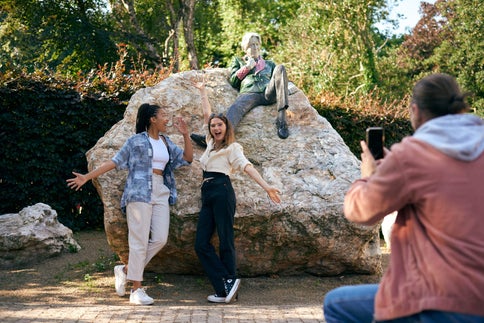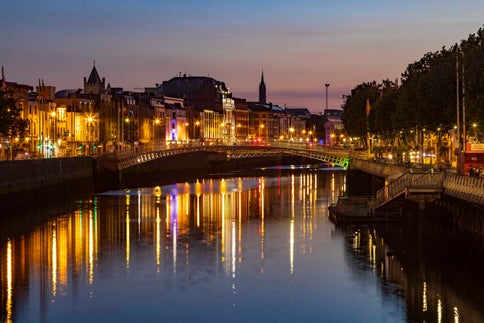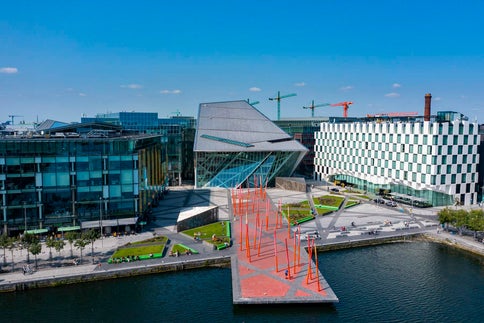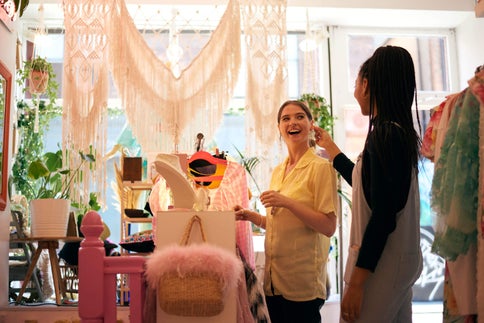- Home
- Traveller guides
- The best Georgian buildings in Dublin
The best Georgian buildings in Dublin

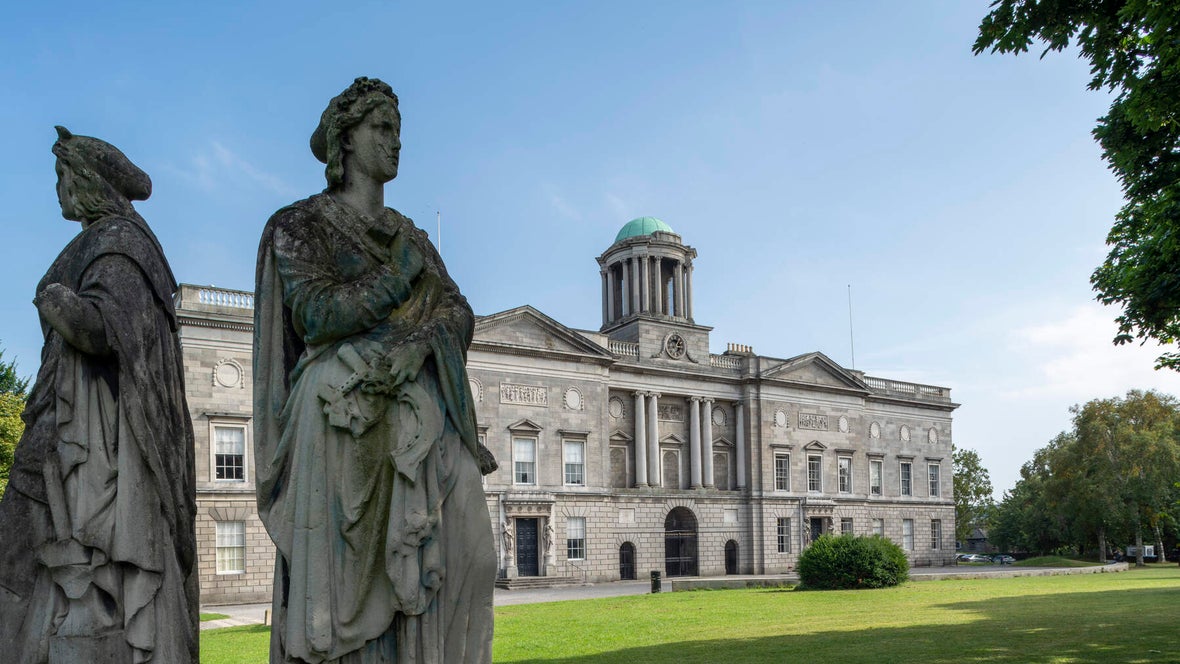
Dublin’s Georgian heart is so beautifully intact that you might find yourself feeling as if you have stepped back in time.
Eighteenth-century Dublin was one of Europe's largest cities, and its predominant style was named 'Georgian' after the four Hanoverian kings of England, all named George. The regularity of redbrick façades, the sweep of granite steps, windows diminishing in size as you go up and all those differently coloured doors set the tone. Elegant residences and grand civic buildings combined to give an appropriate grandeur to a city looking to make a mark on the European stage.
You can still explore the very best of Dublin’s Georgian identity with a walk through some of the city's most prominent parks, buildings and squares.
- 1.
- 2.
- 3.
- 4.
- 5.
- 6.
- 7.
- 8.
- 9.
- 10.
1. Merrion Square
Let’s start at Merrion Square, where a stroll in the park lets you enjoy the sight of the Georgian buildings untroubled by 21st-century traffic. But would it surprise you to discover that these timeless classics weren’t actually built to last? Based on a land-lease system, with leases running from 40 to 100 years, the original idea was that they would be torn down and rebuilt as each lease came up for renewal. Lucky for us that wasn’t put into practice. This also explains why there are small differences in façades and heights, as different builders would be responsible for different sections. Architecture buffs can explore inside and find a wealth of material at the Irish Architectural Archive at 45 Merrion Square.
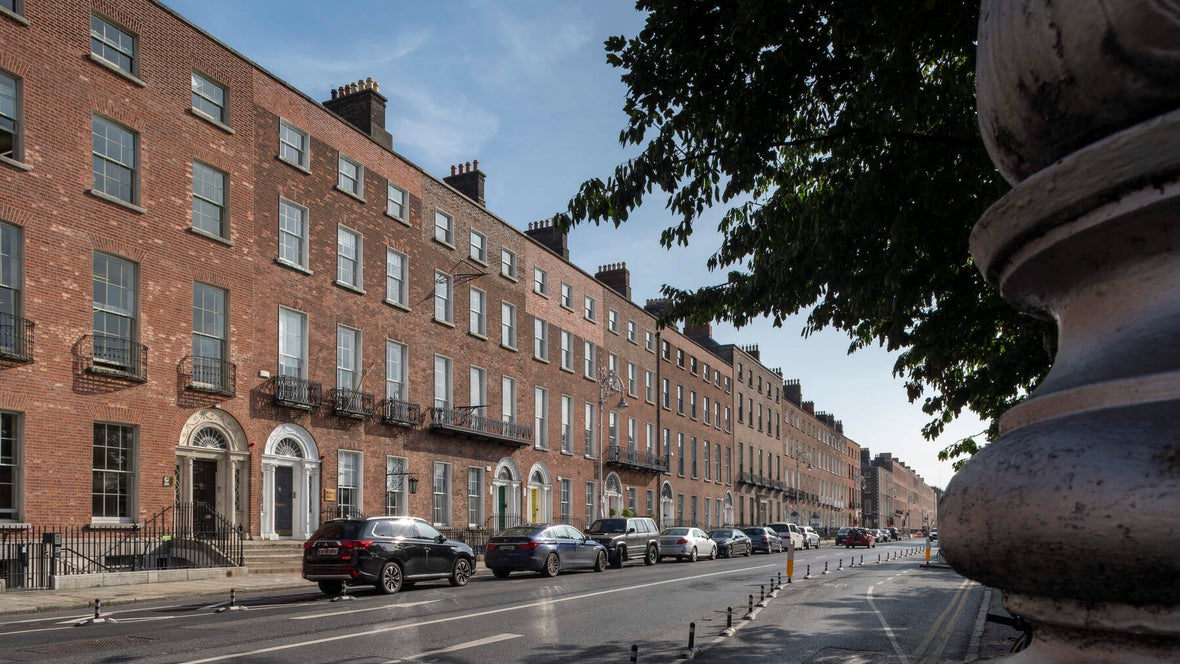
2. The Merrion
Around the corner, the Merrion Hotel occupies four Georgian townhouses along Merrion Row. Refurbished in the 1990s, its reception hall and drawing rooms give you the chance to lounge like a wealthy aristocrat of the Georgian era, albeit with plumbing, electricity and central heating. Arthur Wellesley, the Waterloo-winning Duke of Wellington, was born in No. 24, where the main reception rooms are today. Later, it was also home to the romantically named Valentine Lawless, one of the chief organisers of the United Irish Movement.
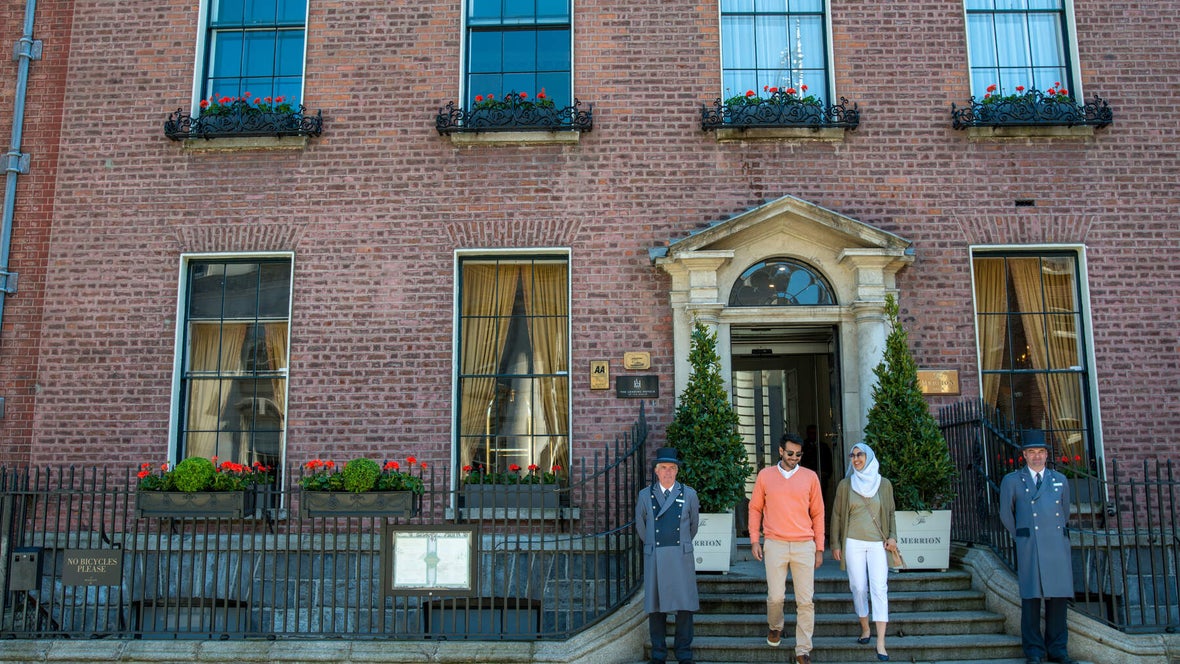
3. Leinster House
Merrion Square is also the site of Leinster House, the seat of the Irish parliament. Built on what was then Molesworth’s Field in 1747, it was designed by Richard Castle (also known as Cassels), who had clearly absorbed the ideas of one of the most influential architects in the world, ever: the 16th-century Italian Andrea Palladio. Palladio was passionate about symmetry, balance, perspective and a huge fan of the kind of columns found in ancient Greek and Roman temples. Leinster House is said to be so ideal in its design that it became the model for the White House in Washington DC (designed by another Irishman, James Hoban).
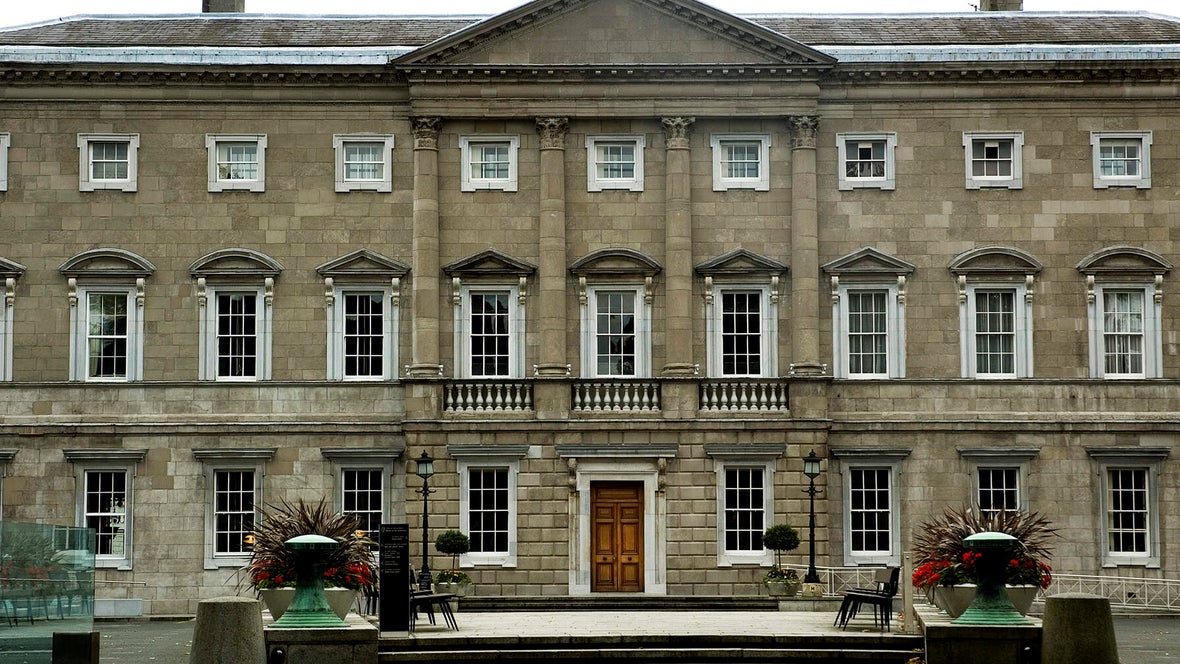
4. Áras an Uachtaráin
Another prominent state building is Áras an Uachtaráin in Phoenix Park, the official residence of the President of Ireland. Originally the Viceregal Lodge, it is actually credited to park ranger and amateur architect Nathaniel Clements. But Clements got help from Richard Castle and one of the other big architectural names at the time in Ireland, Sir Edward Lovett Pearce. Another perfect example of symmetry, you can take guided tours on selected Saturdays.
5. Marlay House
Who wouldn’t love a grand mansion named in their honour? That’s exactly what David La Touche, the first governor of the newly established Bank of Ireland, did in 1764 when he acquired The Grange. He rebuilt, restored and remodelled the building before renaming it Marlay House for his wife, Elizabeth Marlay. Just 9km from the city centre, today you can take a tour to explore inside, marvel at the plasterwork, and generally soak up the vibe. Lord it up outside too, as you revel in the 300-acre estate, which includes weekend markets, a craft courtyard, coffee shops, sporting facilities and a miniature railway. The estate itself is home to many fine old trees, ponds and walking trails. Look out for large scale concerts throughout the year, too.
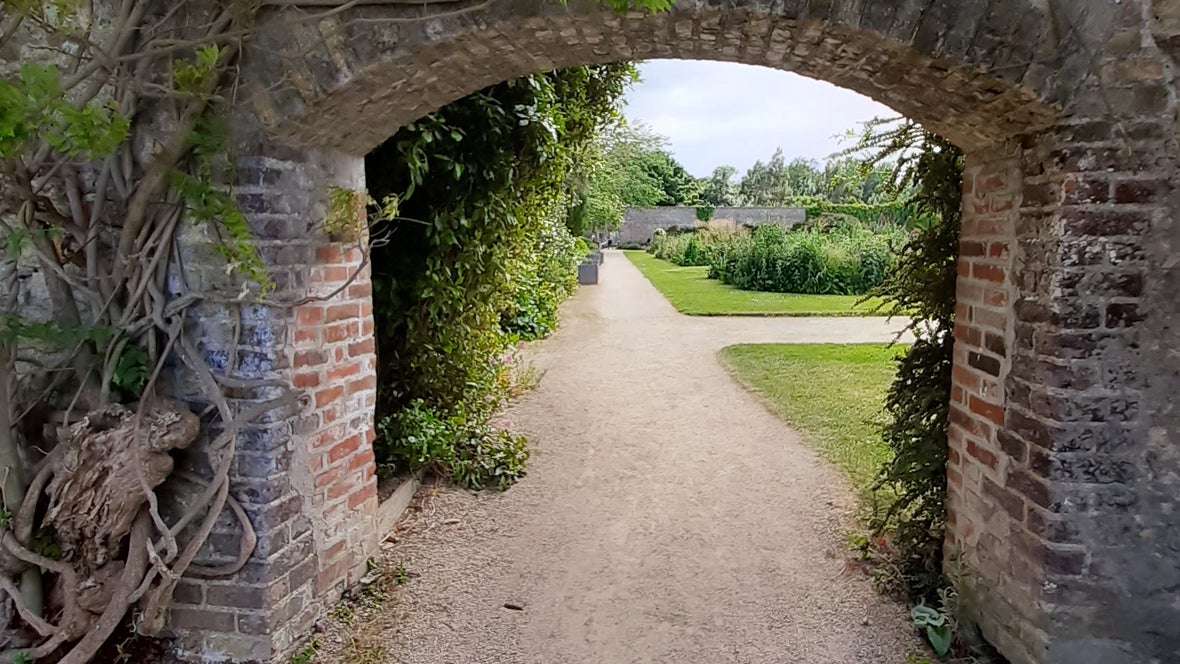
6. 14 Henrietta Street
On the north side of the River Liffey, Henrietta Street is Dublin’s earliest Georgian Street, with houses built for barons, viscounts, lords and earls. A fascinating spot, it still has its cobbled surface, and often features as a backdrop for films and TV shows – including Albert Nobbs and Foyle's War. Numbers 9 and 10 are particularly grand, designed by Edward Lovett Pearce for Luke Gardiner, the 1st Viscount Mountjoy in 1735.
As the fortunes of Dublin declined in the 1800s, contrasts in the city’s wealth became ever more marked. At 14 Henrietta Street, you can visit a museum dedicated to remembering the lives of those who lived in the city’s infamous tenements. By 1911, more than 800 people were living in poverty in just fifteen houses; some houses on the street were still in use as tenements, right up to the 1970s.
At the top of the street is the King’s Inns Law Library, built just as the Georgian era was coming to a close.
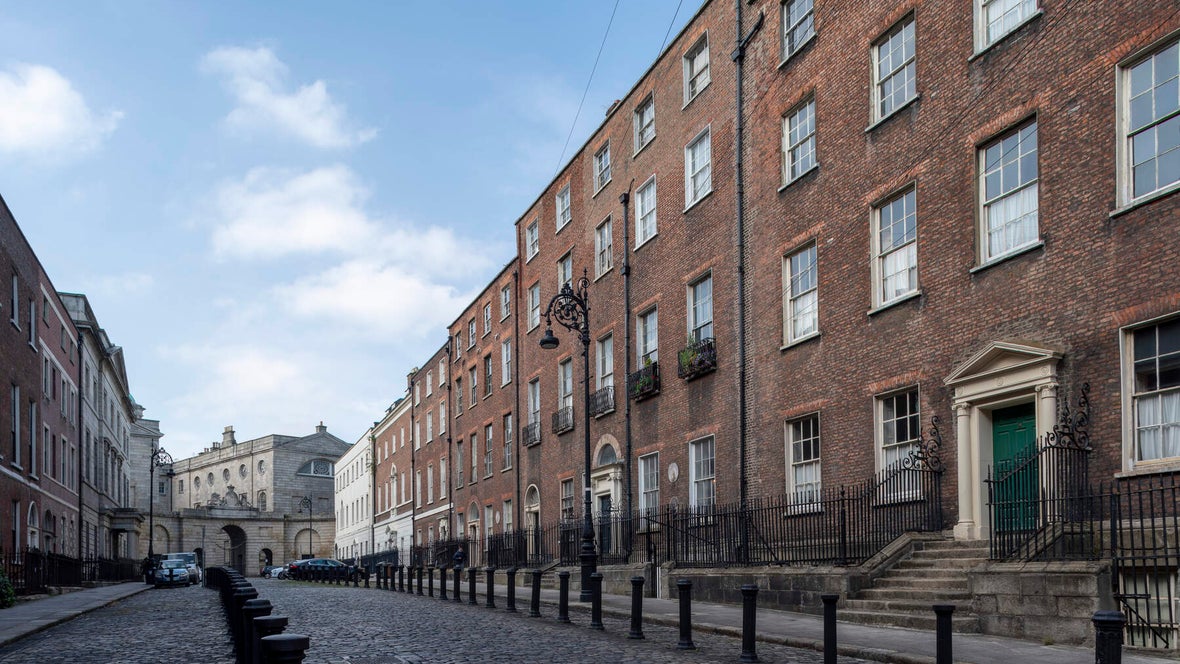
7. Custom House
Another great Palladian-style building is the Custom House, on the River Liffey. Famously burned by the Irish Republican Army in 1921, it was all but destroyed, taking a huge amount of Irish history with it. Painstakingly restored and now with a visitors’ centre and museum, you can discover the evolving story of commerce and city life in Dublin, as well as the history of the fire itself. Spot the carvings of thirteen river gods, plus one for the Atlantic Ocean, by sculptor Edward Smyth, who the Custom House architect James Gandon said had talents “equal to Michelangelo”.
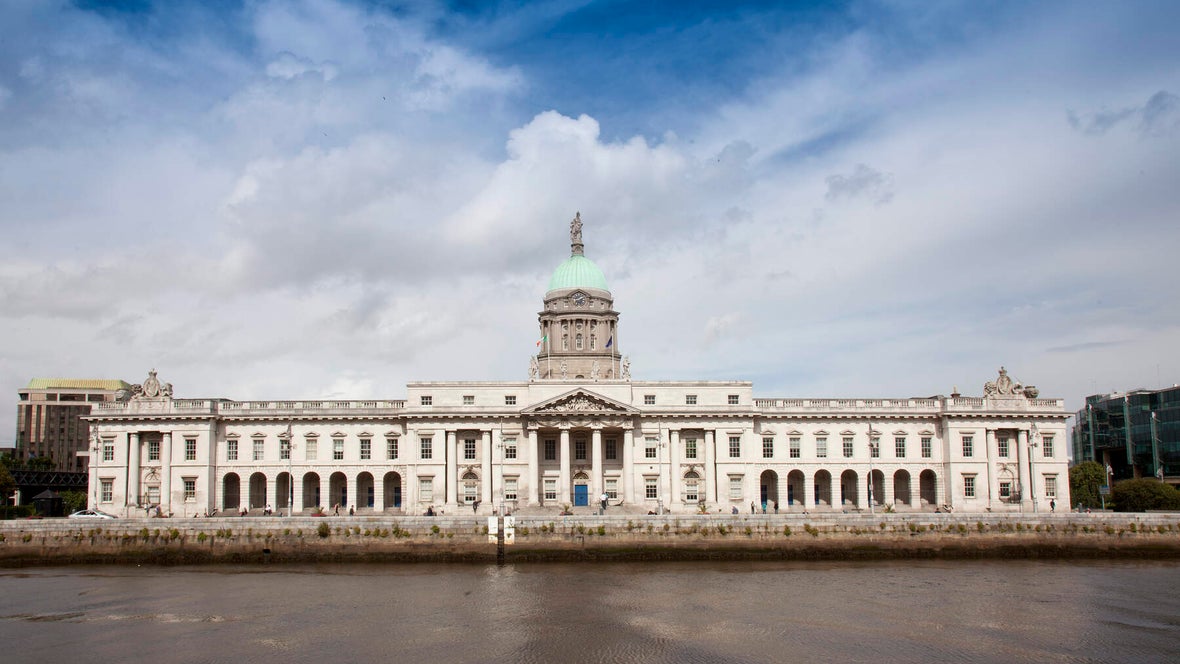
8. Bank of Ireland Cultural & Heritage Centre
We’re back in the realms of government with the Bank of Ireland Cultural & Heritage Centre at College Green. Once the seat of the Irish Parliament, it was the first purpose-built Parliament House in the world when it was constructed in 1803. Architect Edward Lovett Pearce’s design was, at the time, revolutionary, with its semi-circular shape taking up almost an acre and a half of land. The Cultural Centre is in what was once the House of Lords and today houses Listen Now Again, a National Library of Ireland exhibition dedicated to the life and work of beloved Nobel laureate Seamus Heaney.
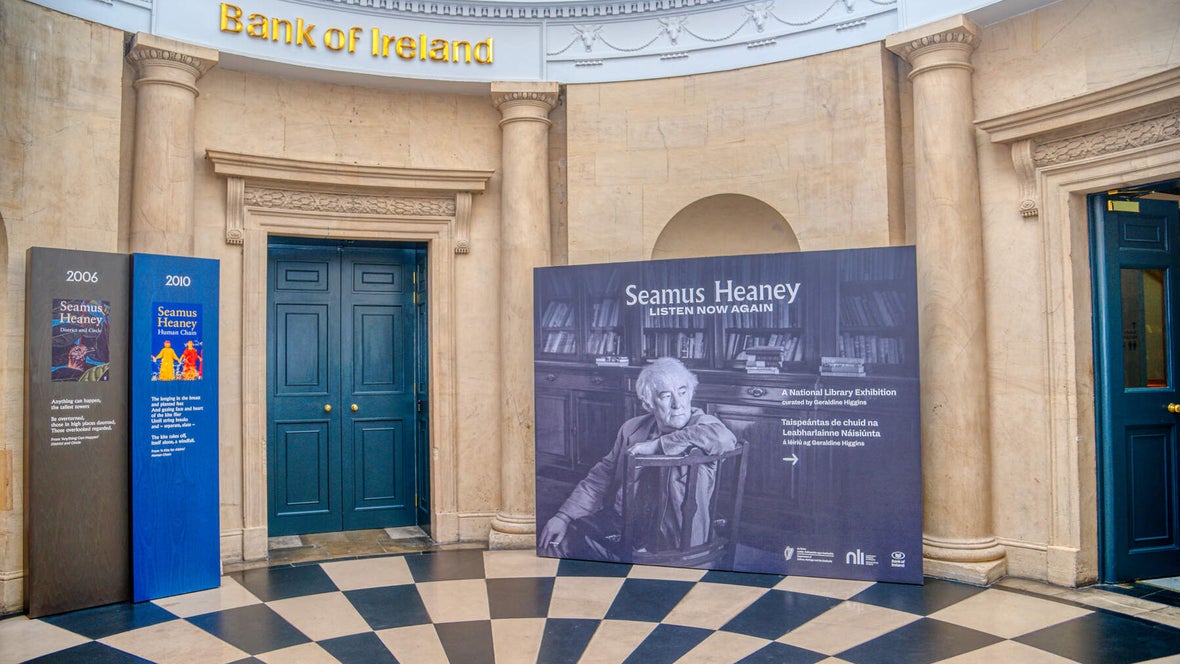
9. Museum of Literature Ireland (MoLI)
Staying with literature, the Museum of Literature Ireland (MoLI) is on St Stephen’s Green. Once the family home of Thomas (Buck) Whaley, the famous gambler and member of the Irish House of Commons, the building was later the home of the Catholic University, now UCD. Famous alumni and residents include Gerard Manley Hopkins, Mary Lavin, Kate O’Brien, Flann O’Brien and Maeve Binchy. James Joyce had his graduation photographs taken under the ash tree in what is now one of Dublin’s few accessible historic house gardens.


10. More Georgian architecture
Check out the Powerscourt Townhouse Centre, an elegant arcade of shops and cafés in a former city centre mansion. Finally, pay a visit to the Gate Theatre, originally built as the Assembly Rooms, alongside another Georgian gem, the Rotunda Hospital, which still serves as one.
Explore more of Dublin's architecture
Beyond Georgian Dublin there is plenty more to uncover, so check out some of the city’s most distinctive public squares.
